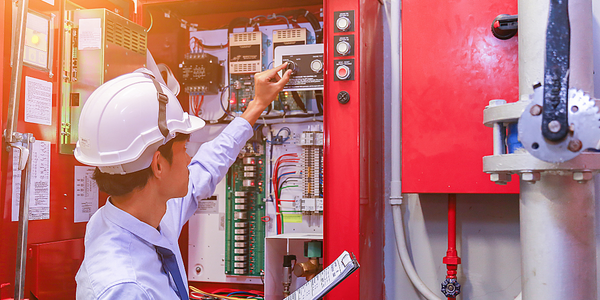Ķ┐ćń©ŗµÄ¦ÕłČõĖÄõ╝śÕī¢

µ”éĶ┐░
Ķ┐ćń©ŗµÄ¦ÕłČÕÆīõ╝śÕī¢ (PCO) µś»Õ£©õĖŹĶ┐ØÕÅŹĶ┐ćń©ŗń║”µØ¤ńÜäµāģÕåĄõĖŗĶ░āµĢ┤Ķ┐ćń©ŗõ╗źń╗┤µīüµł¢õ╝śÕī¢õĖĆń╗äµīćÕ«ÜÕÅéµĢ░ńÜäÕŁ”ń¦æŃĆé PCO ÕĖéÕ£║ÕÅŚÕł░Õ»╣ĶŖéĶāĮńö¤õ║¦µĄüń©ŗŃĆüÕ«ēÕģ©ÕÆīÕ«ēõ┐ØķŚ«ķóśńÜäķ£Ćµ▒éõĖŹµ¢ŁÕó×ķĢ┐õ╗źÕÅŖĶāĮÕż¤ÕÅ»ķØĀķó䵥ŗµĄüń©ŗÕüÅÕĘ«ńÜäńē®ĶüöńĮæń│╗ń╗¤Õ╝ĆÕÅæńÜäµÄ©ÕŖ©ŃĆéõ╗ĵĀ╣µ£¼õĖŖĶ»┤’╝īÕÅ»õ╗źĶ░āµĢ┤õĖēõĖ¬ÕÅéµĢ░õ╗źÕĮ▒ÕōŹµ£ĆõĮ│µĆ¦ĶāĮŃĆé - Ķ«ŠÕżćõ╝śÕī¢’╝Üń¼¼õĖƵŁźµś»ķĆÜĶ┐浯Ƶ¤źĶ┐ÉĶĪīµĢ░µŹ«õ╗źĶ»åÕł½Ķ«ŠÕżćńōČķółµØźķ¬īĶ»üńÄ░µ£ēĶ«ŠÕżćµś»ÕÉ”Ķó½ÕģģÕłåÕł®ńö©ŃĆé - µōŹõĮ£ń©ŗÕ║Å’╝ܵōŹõĮ£ń©ŗÕ║ÅÕÅ»ĶāĮÕøĀõ║║ĶĆīÕ╝鵳¢ÕøĀńÅŁµ¼ĪĶĆīÕ╝éŃĆéÕĘźÕÄéńÜäĶć¬ÕŖ©Õī¢ÕÅ»õ╗źµÅÉõŠøÕŠłÕż¦ÕĖ«ÕŖ®ŃĆéõĮåµś»’╝īÕ”éµ×£µōŹõĮ£ÕæśµÄ¦ÕłČÕ╣ȵēŗÕŖ©Ķ┐ÉĶĪīÕĘźÕÄé’╝īĶć¬ÕŖ©Õī¢Õ░åµŚĀµĄÄõ║Äõ║ŗŃĆé - µÄ¦ÕłČõ╝śÕī¢’╝ÜÕ£©ÕģĖÕ×ŗńÜäÕŖĀÕĘźÕÄé’╝īõŠŗÕ”éÕī¢ÕĘźÕÄ鵳¢ńé╝µ▓╣ÕÄé’╝īµ£ēµĢ░ńÖŠńöÜĶć│µĢ░ÕŹāõĖ¬µÄ¦ÕłČÕø×ĶĘ»ŃĆéµ»ÅõĖ¬µÄ¦ÕłČÕø×ĶĘ»Ķ┤¤Ķ┤ŻµÄ¦ÕłČĶ┐ćń©ŗńÜäõĖĆķā©Õłå’╝īõŠŗÕ”éõ┐صīüµĖ®Õ║”ŃĆüµČ▓õĮŹµł¢µĄüķćÅŃĆéÕ”éµ×£µÄ¦ÕłČÕø×ĶĘ»µ▓Īµ£ēµŁŻńĪ«Ķ«ŠĶ«ĪÕÆīĶ░āµĢ┤’╝īÕłÖĶ┐ćń©ŗõ╝ÜõĮÄõ║ÄÕģȵ£ĆõĮ│ÕĆ╝ŃĆéĶ»źĶ┐ćń©ŗńÜäµōŹõĮ£µłÉµ£¼Õ░åµø┤ķ½ś’╝īÕ╣ČõĖöĶ«ŠÕżćõ╝ÜĶ┐浌®ńŻ©µŹ¤ŃĆéõĖ║õ║åõĮ┐µ»ÅõĖ¬µÄ¦ÕłČÕø×ĶĘ»õ╗źµ£ĆõĮ│µ¢╣Õ╝ÅĶ┐ÉĶĪī’╝īĶ»åÕł½õ╝Āµä¤ÕÖ©ŃĆüķśĆķŚ©ÕÆīĶ░āµĢ┤ķŚ«ķóśÕŠłķćŹĶ”üŃĆéÕĘ▓ÕģģÕłåĶ»üµśÄĶČģĶ┐ć 35% ńÜäµÄ¦ÕłČÕø×ĶĘ»ķĆÜÕĖĖÕŁśÕ£©ķŚ«ķóśŃĆéµīüń╗ŁńøæµÄ¦ÕÆīõ╝śÕī¢µĢ┤õĖ¬ÕĘźÕÄéńÜäĶ┐ćń©ŗµ£ēµŚČń¦░õĖ║ń╗®µĢłńøæńØŻŃĆé
ķĆéńö©ĶĪīõĖÜ
- Ķ┐ÉĶŠō
- Ķ«ŠÕżćõĖĵ£║µó░
- Õī¢ÕŁ”Õōü
ķĆéńö©ÕŖ¤ĶāĮ
- ń”╗µĢŻÕłČķĆĀ
- Ķ┤©ķćÅõ┐ØĶ»ü
ÕĖéÕ£║Ķ¦äµ©Ī
Õł░ 2020 Õ╣┤’╝īÕģłĶ┐øĶ┐ćń©ŗµÄ¦ÕłČÕĖéÕ£║ķóäĶ«ĪÕ░åĶŠŠÕł░ 14 õ║┐ńŠÄÕģā’╝øõ╗Ä 2014 Õ╣┤Õł░ 2020 Õ╣┤’╝īÕżŹÕÉłÕ╣┤Õó×ķĢ┐ńÄćõĖ║ 11.79%ŃĆé
µĪłõŠŗńĀöń®Č.

Case Study
versiondog on the Trial of Big Bang
Backing up and monitoring of Industrial control system programs for the Large Hadron Collider (LHC) at CERN near Geneva, the world┬┤s largest particle accelerator, has been entrusted to the data management system versiondog. The European Organization for Nuclear Research uses the system to manage the data of around 500 components, making versiondog one of CERN's standard technologies.

Case Study
Boost in Online Orders and Aftermarket Revenues for Atlas Copco
Printed parts manuals become less and less relevant and useful with time. The static information offered by printed documentation was no longer good enough for a major global player like ACC. ACC needed a solution that would deliver updated versions of documents to their network immediately. The company wanted a dynamic system, which would not only display current inventory levels, but also provide customers with information regarding how products should be used. Atlas Copco Construction’s Needs • Offer customers real-time part and information updates • Provide customers a comprehensive parts lookup and search platform • Administer an eCommerce platform with shopping cart and ERP integration • Produce a multilingual site for parts ordering

Case Study
Sensor Synergy Case Study
Whether sensors are stand-alone, connected to PLCs, interfaced to PCs or tied directly to networks, these devices can be found in a multitude of electronics that affect daily life ŌĆō from washing machines to windshield wiper blades. Although there are a number of ways to add sensor data to a system, designers and users want to keep the sensor-to-system interface process as easy as possible, and, in many cases, users want this information to be accessible via the Internet.In recent years, the IEEEŌĆÖs (Institute of Electrical and Electronics Engineering) approval of multiple standards, coupled with the increase of factory automation suppliers differentiating themselves by developing different communications protocols, has resulted in over 50 different hardware and software interface protocols. What initially was an opportunity for factory automation suppliers to provide enhanced new features to their customers has become a challenge for sensor manufacturers. It is increasingly difficult to develop sensor solutions that will interface with all applicable protocols. To help alleviate this problem, smart sensor technology pioneer, Sensor Synergy, developed a near-universal sensor-to-Internet solution utilizing Lantronix Device Networking technologies.





